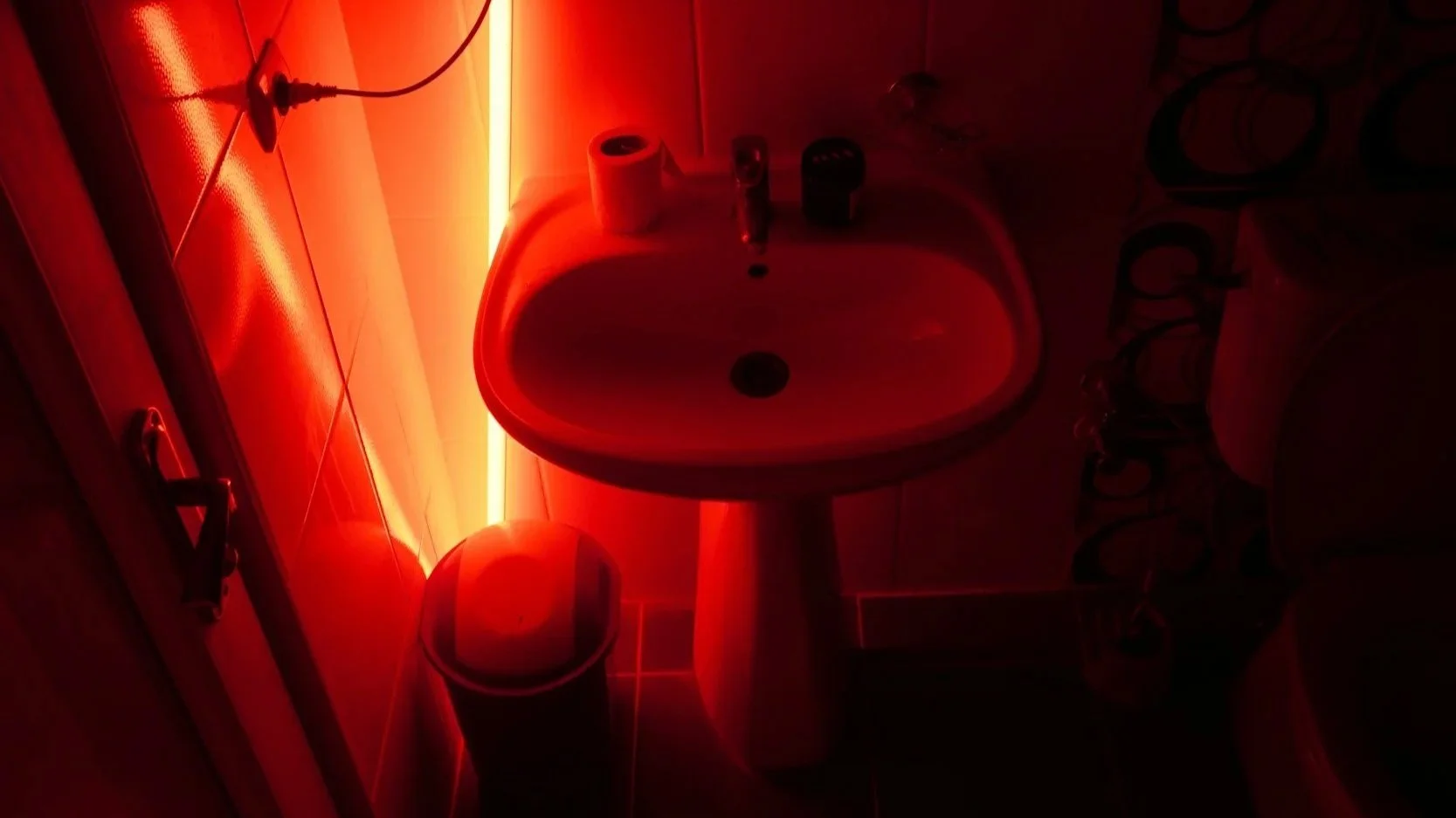🏚️Inside the Haunted House of OCD: The Bathroom
When you think of the scariest room in a haunted house, what comes to mind? The attic? Basement? A dimly lit hallway?
This October, for OCD Awareness Month, we’re stepping inside The Haunted House of OCD — not one filled with ghosts or flickering lights, but with intrusive thoughts, doubt, and relentless uncertainty.
Obsessive-Compulsive Disorder (OCD) is quite the versatile ghoul. It can decide that any room in the house can be haunted — not by ghosts or creaks in the walls, but by the relentless whispers and jump scares of intrusive thoughts that appear the moment you walk in.
In OCD, those intrusive thoughts are called obsessions. They often show up as unwanted, distressing, or even terrifying thoughts that feel impossible to ignore. They can seem like they’re part of you — like they’ve possessed your mind and refuse to let go.
For one person, the scariest room might be the bathroom. For another, it might be the kitchen, the bedroom, or even the front door. OCD has a way of turning the most familiar places into frightful spaces — each with its own set of fears, rituals, and what if thoughts.
Over the next four weeks, we’ll step inside this haunted house together, exploring how OCD can turn everyday spaces into sources of fear — and how effective treatment helps reclaim them.
Let’s start with one of the most feared rooms of all: the bathroom.
The Bathroom: Feces, Blood, STDs, Unwanted Pregnancy, Germs🧟
It looks like a normal bathroom — tiled, clean, stocked with soap. But in the mind of someone with OCD, it can feel like a danger zone. For each person, that fear can look different. Surfaces may become suspicious. Eyes dart to every potential contaminant — the toilet bowl brush, the used hand towel, the sink handle. Things that most people might briefly notice for hygiene purposes can feel like genuine threats to someone living with this fear.
To an outsider, it might look like overreacting. But the bathroom can stir up so many what if fears that it easily earns a place as one of the rooms OCD haunts most in the house.
It’s not just about germs. It’s about the terrifying possibilities the mind attaches to them. Some of the many triggers include feces, blood, disease, infection, or even fears of an unwanted pregnancy through seemingly impossible scenarios.
Some of the many what if fears that haunt the bathroom:
What if something like feces, blood, or an STD got on me?
What if I touched something contaminated without realizing it?
What if I spread these contaminants to someone I love?
What if there’s feces on the towel I just used?
What if I didn’t wash my hands well enough?
What if after I washed my hands, I touched the faucet handle and completely recontaminated them — and now they’re never really going to be clean?
What if my menstrual pad is contaminated?
What if I touched something and when I use a tampon, I get an STD?
What if there’s blood on the toilet seat or sink I didn’t see?
What if I catch something from the faucet handle or doorknob?
What if others didn’t wash their hands well enough and now my hands, clothing, or something else is dirty?
What if I left semen on the seat and someone — maybe a family member, or even someone who isn’t my partner — gets pregnant because of me?
What if my shower is the only place I can feel truly clean?
What if I didn’t wash my body in the “right” way and got feces on parts of my body?
What if microscopic particles of germs are still there, even after cleaning?
What if the cleaning products I used left chemical residue that could poison me, a pet, or a loved one?
What if I can never be completely clean?
Each thought sparks a wave of anxiety, leading to washing and re-washing, checking and re-checking, until your skin burns but your brain still screams, not enough.
The bathroom can also become a stage for body- and health-related obsessions. Mirrors, scales, and skin become targets of checking — scanning for signs of illness, infection, or contamination. What starts as a quick glance can spiral into an hours-long ritual, a desperate attempt to find certainty in a space that only seems to grow more haunted the longer you stay.
The bathroom may feel like one of the most haunted rooms in the house, but even the scariest spaces can be reclaimed. Recovery doesn’t mean the fear disappears — it means learning that you don’t have to obey it, even when it screams the loudest.
Exposure and Response Prevention (ERP) for OCD
With treatment like Exposure and Response Prevention (ERP), there are effective actions you can take to stop feeding the OCD vampire that forever thirsts for certainty. From there, you can begin taking your space back — one room at a time — and get back to whatever it is you want to be doing, instead of focusing on OCD.
The OCD ghosts lose their power when you stop running from them. And over time, the screams quiet — fading into whispers, if they’re even still haunting at all.
🕯️ Stay tuned for next week’s room in The Haunted House of OCD — where we step into the kitchen and face the fears of contamination, sharp edges, and unbearable responsibility.





